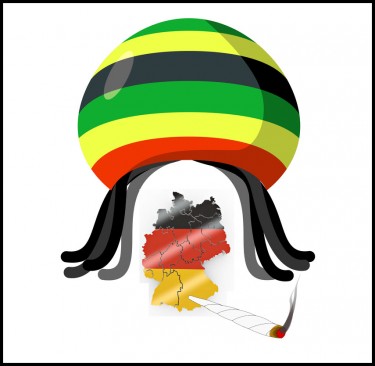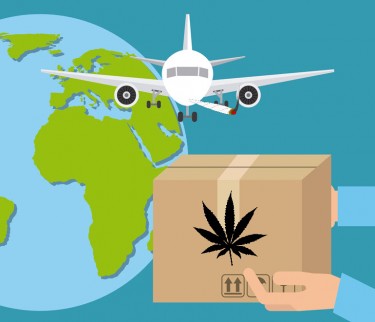
International drug treaties banning marijuana
International drug treaties: do they mean anything?
A combination of three distinct but complementary United Nations treaties provide the framework for international law relating to the global drug control regime. These contracts are;
-
the Single Convention on Narcotic Drugs, 1961, as amended by the 1972 Protocol
-
the Psychotropic Substances Convention, 1971, and
-
the Convention against Illicit Traffic in Narcotic Drugs and Psychotropic Substances, 1988.
These treaties were designed to establish internationally relevant drug control measures. The agreements aim to ensure that psychoactive substances are accessible for scientific and medical purposes, while preventing access to illicit channels. The treaties also include general bans on the use of and trafficking in psychoactive substances. These drug control treaties complement and support each other, with one addressing issues and problems that the others cannot address.
Let’s take a deeper look at each of these contracts and the situations they cover.
Single Convention on Narcotic Drugs, 1961, as amended by the 1972 Protocol
The 1961 Single Convention on Narcotic Drugs, commonly called C61, is a global agreement that oversees the activities (supply, manufacture, use, trafficking) of various narcotic drugs. The treaty also establishes a regulatory regime for the scientific and medical uses of these narcotics. The regulatory system includes research, approval and establishment of various treatment measures.
The Single Convention on Narcotic Drugs was adopted by the United Nations in 1961 and came into force in December 1964. The purpose of the Convention is to reduce drug abuse through restricting access to certain drugs and through global cooperation.
The Convention intends to combat drug abuse through collective global action. Under this treaty there are two types of control and intervention that go hand in hand. The first intervention aims to restrict the use, possession, distribution, export, import and trafficking of drugs specifically for scientific and medical purposes. The second intervention involves a war on drug trafficking through cooperative international efforts to deter and contain drug traffickers.
Previous contracts had only administered coca, opium and other derivatives such as heroin, cocaine and morphine. However, the C61 seems capable of more. The convention centralized previous treaties and expanded their scope to include cannabis and other substances with effects similar to those already regulated.
However, it remains uncertain whether the C61 Convention calls for the criminalization of possession of drugs for personal use. This is because the language of the treaty is vague and should probably require the intervention of the International Court of Justice to resolve the issue decisively.
Nevertheless, several commissions have attempted to grapple with the issue. But with the exception of the LeFain Commission, a larger percentage of states have enacted legal possession for personal use.
The United Nations Office on Drugs and Crime (UNODC) is responsible for monitoring and monitoring the proper implementation of the convention in each member state. It is also responsible for coordinating local authorities when necessary.
1971 Psychotropic Substances Convention
The 1971 Convention on Psychotropic Substances was also drafted by the United Nations treaty to regulate psychoactive substances such as barbiturates, psychedelics, amphetamine-type stimulants and benzodiazepines. The contract was signed on February 21, 1971 in Vienna, Austria.
The 1971 Convention on Psychotropic Substances had to be enacted because the 1961 Single Convention on Narcotic Drugs failed to address many of the recently discovered psychotropic drugs. This is because the scope of C61 was limited to drugs like coca, opium, and cannabis-like effects.
The 1971 treaty established a global regulatory regime for psychotropic substances. The Convention recognizes the broadening and diversification of the scope of drug abuse, introducing controls for several synthetic drugs. Controls are based on each drug’s potential for abuse as well as its therapeutic value.
In 1960, psychotropic substances became widely available and the authorities were against them for a number of reasons. They argued that as a result of the negative health effects, use of psychotropic substances leads to reduced moral standards.
The combination, which includes export and import restrictions among other regulations, was intended to restrict drug use for medical and scientific purposes and was enacted on August 16, 1976. As of 2013, 183 Member States are parties to the treaty.
United Nations Convention against Illicit Traffic in Narcotic Drugs and Psychotropic Substances 1988
This is the third and final treaty of the United Nations International Drug Conventions. It provides extra-legal structures and frameworks for the enforcement of the 1971 Convention on Psychotropic Substances and the Single Convention on Narcotic Drugs. The treaty came into effect on November 11, 1990. To date, exactly 191 states are contracting parties to the treaty.
The United Nations Convention against Illicit Trafficking in Narcotic Drugs and Psychotropic Substances of 1988 contains detailed regulations against drug trafficking. It also introduces provisions against precursor chemical diversion and money laundering.
The Convention promotes global cooperation through, for example, regulated deliveries, kidnapping drug traffickers and the controlled transfer of procedures. While previous treaties had focused on drug dealers and manufacturers, the 1988 Convention focused more on users.
The 1988 agreement is an attempt to strike a political balance between producer and consumer countries. Thus, the responsibility to suppress the illicit supply of drugs lies not only in the producing countries (South America and Asian countries) but also in the consuming countries (North America and Europe) in order to suppress the illicit demand for drugs.
However, it remains uncertain whether the treaty will mandate a ban on possession of drugs for personal use. This follows from the clause that claimed possession for personal use can only be prohibited if it is in breach of the provisions of the 1961 or 1971 Convention
Conclusion
The United Nations international drug treaties have helped introduce standardized regulatory controls in member states. These contracts are frequently consulted when complex questions about pharmaceutical regulations arise in the Member States. A proper interpretation of the laws and treaty provisions usually helps to put things in context.
CANNABIS DRUG TREATIES, READ MORE…

DRUGS UN TREAT DAMN JAMAICA STARTS SHIPPING WEED!
OR…

CANNABIS SHIPPING TO OTHER COUNTRIES BEGINS DESPITE UN DRUG TREATIES!

Post a comment: